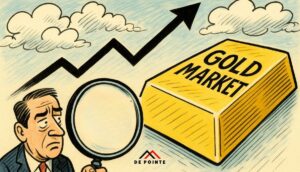Article

As the calendar turns and investors gear up for a new year, the financial world buzzes with strategies and phenomena that could shape the upcoming months. One such intriguing trend is the “January Effect,” a market phenomenon that holds the promise of setting the stage for a prosperous year, particularly in the realm of small-cap stocks. In this exploration, we’ll delve into the complexities of the January Effect, its potential influence on investments, and journey through historical examples that spotlight its significance.
Understanding the January Effect:
The January Effect is a recurring market tendency observing a propensity for stocks, especially those categorized as small cap, to experience notable price increases during the month of January. This phenomenon has garnered attention due to several contributing factors that come into play during this time of the year and its ability to demonstrate the volatility and susceptibility to outside forces that the stock market is subject to.
One such factor is tax-related considerations. Towards the end of the year, investors often engage in tax-loss harvesting, a practice where underperforming stocks are sold to offset capital gains. This selling pressure can lead to temporarily depressed stock prices, creating opportunities for savvy investors to swoop in and capitalize on potential bargains as the new year begins.
Additionally, year-end portfolio rebalancing by institutional investors and fund managers can contribute to the January Effect. As they adjust the weightings of assets in their portfolios, stocks that have performed well throughout the year may experience selling pressure, only to rebound as capital is reallocated in January.
The optimism associated with the start of a new year also plays a role. Investors, rejuvenated with fresh perspectives and resolutions, may contribute to a more positive market sentiment, driving increased demand for stocks and adding to the momentum of the January Effect.

Factors Contributing to the January Effect:
- Tax-Loss Harvesting: Investors may engage in tax-loss harvesting towards the end of the year, selling underperforming stocks to offset capital gains. This selling pressure could result in depressed stock prices, creating opportunities for savvy investors to swoop in and capitalise on potential bargains come January.
- Year-End Portfolio Rebalancing: Institutional investors and fund managers often engage in portfolio rebalancing towards the end of the year. This process involves adjusting the weightings of assets in a portfolio to maintain the desired level of risk and return. As a result, stocks that have performed well throughout the year may see selling pressure, only to rebound in January as investors reallocate their capital.
- Renewed Investor Optimism: The start of a new year typically brings renewed optimism and confidence among investors. As economic outlooks are reevaluated and resolutions are made, the market sentiment may become more positive, driving increased demand for stocks and contributing to the January Effect.
While the January Effect is not a guaranteed strategy for success, it remains an intriguing aspect of market behaviour that investors may consider in their decision-making process; it also serves as a powerful reminder of the stock market’s proneness to be influenced by human nature, which can, of course, be very unpredictable. Other markets, such as art investment or gold, can provide investors with much-needed immunity from the volatility and suggestibility of the stock market. To explore how these markets can help you hedge against stock market volatility, subscribe below or download one of our free guides.






